If you have a passion for plants, you have the power to turn your hobby into a business. The internet provides a platform to connect with other plant fanatics, advanced botanists, and curious homeowners who want to liven up their living areas.
Maybe it’s time to use your growing expertise to start an online business. Here’s everything you need to know about how to sell plants online — along with some tips to get your company off the ground.
Just so you know
Sell plants online with Jotform to boost sales for your plant nursery or gardening business! Create custom order forms that your customers can use to pay on any device.
Where can you source your plants?
When it comes to learning how to sell plants online, you first need to have plants to sell. Unlike traditional businesses where you buy materials and assemble them to sell a finished product, you’re selling a living thing that could be still in the early stages of growth, which means it will take time (often several weeks) before it’s ready for the customer.
There are multiple ways to source the plants you sell online. The first is to grow your own plants in a backyard nursery. This could be a good option if you plan to sell plants on a small scale (typically as a hobby) and have both the time and the land to turn tiny seedlings into viable plants.
The next option is to buy your plants wholesale. You may be able to find a local nursery to partner with, which would then free up your time to market and resell them in unique pottery or under your own branding.
Many nurseries will be up front about your ability to resell plants; some even specialize in growing for online resellers. One such nursery is Gro ‘n Sell, which prides itself on its high-quality starter plants. It has a large product line, and you can place orders in advance for a discount. This type of partnership can save you a lot of time and help you grow your business quickly.
There are multiple plant wholesalers to choose from, so shop around for plant variety, price, and shipping costs to make sure your vendor costs don’t cut into your bottom line.
It’s entirely possible that you’ll work with multiple wholesale nurseries throughout the year. Some nurseries are seasonal and dependent on the climate in their area. If you sell plants throughout the year, you may need to change distributors seasonally.
Which channels are best for plant sales?
Along with sourcing variety, you also have different options when it comes to selling your plants — whether that’s selling them on your own e-commerce site or through a third-party vendor.
If you develop your own e-commerce site, you won’t have to worry about fees or competition from other vendors on the page. However, you’ll need to build a large enough audience to make a profit. Many vendors turn to third-party companies like Etsy and Amazon because they can reach millions of people within a few hours.
When it comes to choosing a third-party option, consider the different websites available to you. Will it be easier to get noticed on eBay? Can you sell for higher prices on Etsy? While you aren’t limited to one website, each vendor has its own best practices to get noticed, so you may want to dedicate yourself to one platform instead of spreading out to sell on several.
If you’re worried about getting noticed on Amazon, check out the options available to plant sellers. Amazon has improved its Amazon Plants Store to make it easier for customers to browse or buy.
“Plants have always been available on Amazon through various vendors, but they haven’t all been easily accessible and organized in one place until recently,” Christina Butan writes for Real Simple.
When choosing a third-party vendor, make sure you’re aware of the restrictions that come with shipping plants and the rules for sellers online. These can vary by platform, plant species, and region.
“Anyone shipping nursery stock must adhere to seller guidelines for Etsy, Amazon and eBay, among others,” writes Susan Brackney, author of The Insatiable Gardener’s Guide. “In addition to barring the sale of some specific plant or seed types, they require online nurseries to adhere to state, federal and international laws. They’ve been enacted to help prevent the spread of potentially harmful pests and pathogens.”
These regulations vary significantly by state. You may need a license to operate your plant sales business and may need to report which plants you plan to grow and sell. Not only do these steps keep you in good standing with the local government, but they also make you an ethical grower. Invasive species can destroy the populations of native flora and can even be dangerous to local fauna.
As you set up your online business, you may want to focus on selling to local residents or limiting your plant species to those native to the United States or your home region.
The business basics of how to sell plants online
The core of a good plant company is a solid business model. Once you get a handle on your bookkeeping, marketing, fulfillment, and order management, you can start to scale your business and run it with confidence.
Tips for shipping plants
Plants are incredibly delicate, especially when it comes to shipping. Not only do you need to protect the plant from damage, but you also need to keep it alive. Make sure you wrap your plants in a moist paper towel and then use plastic wrap and newspaper to keep them safe.
If you grow your plants in pots, you also need to remove the planter and shake any dirt free. This will lighten the plant and reduce your overall shipping costs while allowing you to reuse the planter.
Some plant sellers, however, sell their planters as part of the plant purchase, especially if the planters are uniquely decorated or part of their branding.
Payment processing
One of the main reasons why sellers opt for third-party vendors is so they don’t have to worry about payment processing. They’re willing to pay Etsy or Amazon a fee if it means their customer orders are secure and they get paid on time for the items that they sell.
If you opt to develop your own e-commerce website, it’s important you take payment processing seriously. You can use an app like Shopify for your e-commerce site and work with other secure vendors that can protect customer data. You aren’t just responsible for protecting customers’ credit card information but also their names, addresses, emails, phone numbers, and any other relevant data you collect. In addition, you need to keep your own bank account information safe.
Online form builder Jotform can help with payment processing as you learn how to sell plants online. With Jotform, you can easily embed a payment processor into your online store for a secure checkout experience and a one-stop shop for your orders. Jotform always prioritizes customer safety to keep your business safe from data breaches and lawsuits.
Good bookkeeping habits
You don’t need to be an accounting expert to start a plant business, but it may be beneficial to take a basic accounting class so you understand how to balance your books. Good accounting practices will help you stay profitable.
For example, do you know which plants are most profitable to sell? Which plants are most popular to liven up a home or garden or easiest to maintain?
This is where your bookkeeping know-how becomes important. If you already have an idea which plants to sell — and how much they should sell for — you can calculate the cost to buy the seeds and fertilizer, grow the plants, package and ship them, as well as rent the space for your greenhouse, which will include utilities and water. These costs add up. Even if you plan to source your plants from wholesale nurseries, you’ll have to factor in the elevated prices.
This doesn’t mean you can’t specialize in growing rare and delicate plants. However, in the short run, you may want to start with easy, low-maintenance plants that grow quickly and help you turn a fast profit — at least while you nurture your specialty buds.
Tracking expenses is particularly important when you’re first starting out, as you’ll likely have more startup expenses to recoup.
Developing an order management process
There are two schools of thought when it comes to selling plants to make money. You can either take orders ahead of time or grow a variety of plants and see what people buy from your inventory. Each approach has pros and cons, and will affect your order management.
By accepting orders, you know where the demand is and can plan what to grow. You may even be able to set up order forms during the winter months to gauge future demand. Jotform has more than 900 order forms available so you can get the information you need from customers and map out your growing area.
Your second option is to grow what you want and see what people buy. This removes the stress of filling existing orders — especially if your seedlings don’t turn out the way you expected. The downside is that you’re subject to the rules of supply and demand. You may run out of something people like early on or get stuck with plants that aren’t selling.
No matter which direction you go, you can manage all your orders with Jotform Store Builder. This code-free, comprehensive platform enables you to build and operate your very own plant store from the palm of your hands.
Use drag-and-drop functionality to set up your store, adding brand colors, imagery, and messaging. Then connect with one of 25-plus payment gateways to enable a seamless, highly secure checkout process. Because Jotform Store Builder is one of the most user-friendly platforms on the market for selling goods online, your plant store will be set up and ready for orders in minutes.
The basics of marketing for first-time plant entrepreneurs
Once your business is up and running, it’s time to market your brand and win people over. To create an effective marketing strategy, consider what makes your business unique. You can also look to other plant sellers to see what they’re doing — and why they’re profitable.
For example, some companies — like plant delivery service The Sill — have positioned their plants as stress-reducers at work or companions at home. Not only do they dress up your desk, but they also help you better cope with the frustrations of the workplace.
You also can expand beyond plants into other gardening essentials. Clara Leung, the founder of Clara’s Green House, sells houseplant sets that include the plant, soil, and planter. She even sells homemade soil mix. This takes the stress off of city dwellers who might not have a space to garden or customers who lack your green thumb and don’t know how to care for the plants they buy.
To start a successful online plant sales business, your passion for gardening comes first. If you have the knowledge and ability to grow or resell plants, then you just need to put your business together.
Thanks to tools like Jotform Store Builder, technology has made starting a business significantly easier. Now that you know a bit more about how to sell plants online, Jotform can guide you through order management and payment processing aspects so you can provide your customers with convenient, streamlined transactions.
Want to learn even more about Jotform and draw inspiration from another small business owner? Check out this story about how one individual used Jotform and instant messaging program Slack to grow and scale his dog bed making company.


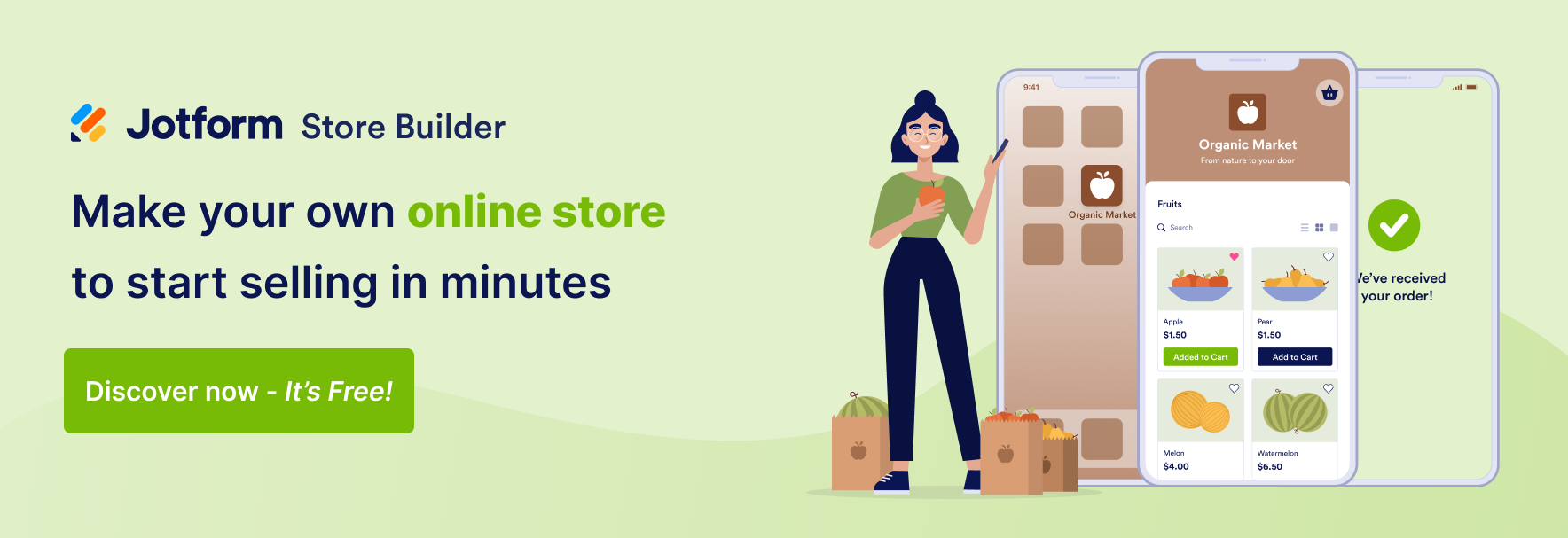









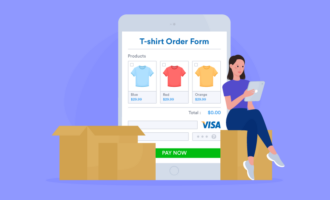










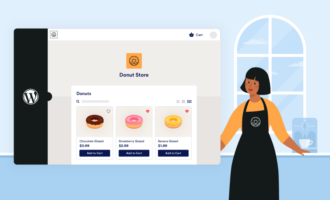




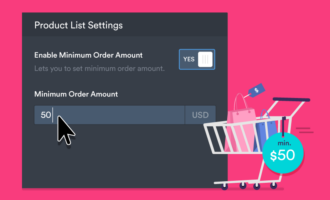
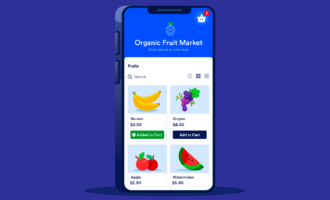
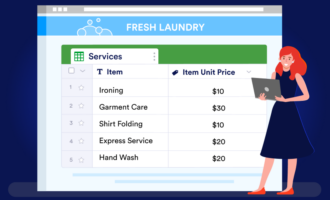









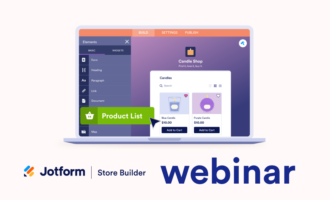






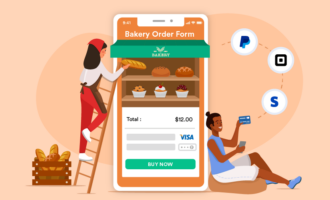

Send Comment:
6 Comments:
More than a year ago
Thanks for giving me this information
. It is beneficial to me, so keep doing well.
More than a year ago
You have a genuine capacity to compose a substance that is useful for us. You have shared an amazing post about corrugated metal garden edging.Much obliged to you for your endeavors in sharing such information with us.
More than a year ago
Great content.
Thank you
Gangajal Nursery
More than a year ago
We have plants nursery need to sell plants online in Hyderabad
More than a year ago
Hi I want to sell my mango plants we have many different kinds of mango plants we make it as a business and now I want to sell it on online
More than a year ago
Hi I want to sell my plants we have many different kinds of plans we make it as a business and now I want to sell it on online